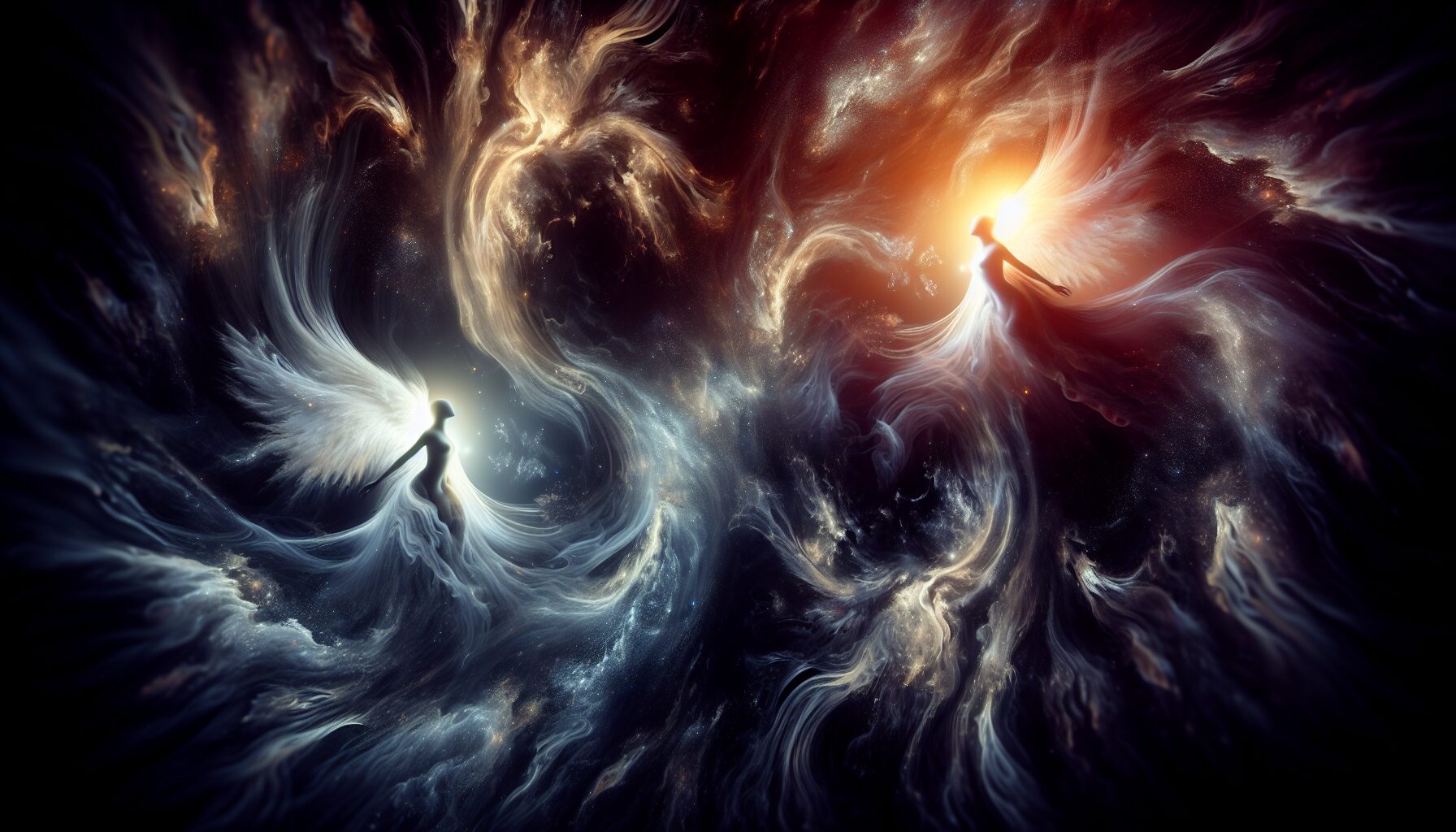Angels of the Abyss: Mythic Archetypes of Shadow
The concept of “Angels of the Abyss” evokes an imagery both haunting and compelling, oscillating between celestial grace and the eerie whispers of the underworld. These archetypes embody the dichotomy of light and darkness—an exploration that is as old as storytelling itself. Archetypes act as psychological symbols and have scribed their presence into our collective unconscious through myth, literature, and art. Understanding these archetypes offers insight into human nature’s shadow aspects, and how this shadow manifests within different cultures and traditions.
The Origin of the Abyss
The Abyss, a term often resonating with chaos and darkness, finds its roots in ancient mythologies. From the primordial chaos in Greek mythology, as described by Hesiod in “Theogony”, to the watery void in the Mesopotamian myths, the abyss embodies the unknown—a source of creation and destruction.
“First of all Chaos came into being. Then broad-bosomed Earth…” – Hesiod, “Theogony”
The Greek Erebus, symbolizing deep darkness, and Tartarus, the deep abyss used as a dungeon of torment in the afterlife, represent places where these mythic angels might arise. These figures shape the tales we tell about wrestling with inner demons and finding redemption through the labyrinth of shadows.
Angels and Demons: Bridging the Gap
Concepts of angels and demons often blur within the context of the abyss, underscoring the fluidity between good and evil. In Christian theology, fallen angels or demons led by Lucifer discovered their sovereignty in this realm. Lucifer, the light-bringer turned prince of darkness, epitomizes this duality.
“…for Satan himself masquerades as an angel of light.” – 2 Corinthians 11:14
Islamic tradition introduces the figure of Iblis, akin to Lucifer, who falls from grace due to pride. Such characters demonstrate the seductive nature of the abyss, where former celestial beings undergo transformative journeys into the shadows.
The Psychological Shadow
Carl Jung, a prominent psychologist, expanded on this notion with his concept of the shadow—the unacknowledged, darker parts of the psyche. In Jungian psychology, the integration of the shadow is essential for personal maturity and psychological health.
“One does not become enlightened by imagining figures of light, but by making the darkness conscious.” – Carl Jung
The “angels of the abyss” in this framework represent the integration of our own shadows. By embracing our hidden fears, desires, and instincts, we can reach a harmonious understanding of ourselves, just as mythic heroes must confront underworld trials to achieve enlightenment.
Archetypes in World Myths
- Inanna’s Descent: The Sumerian goddess Inanna’s journey to the underworld symbolizes death and rebirth cycles, a thematic return from the abyss with newfound wisdom.
- Orpheus: The Greek hero Orpheus ventures into the underworld to rescue his beloved Eurydice, epitomizing love’s battle against the pull of despair and darkness.
- Vishnu’s Avatars: In Hindu mythology, Vishnu’s descents to earth in various forms to combat evil signify divine intervention in the abyss, transforming chaos into order.
The Influence in Modern Culture
The influence of these archetypes transcends classical myth and finds its expression in modern literature and film. Characters like Darth Vader from the “Star Wars” saga and Gollum from “The Lord of the Rings” represent flawed beings consumed by their shadow archetypes.
Authors such as Neil Gaiman and filmmakers like Guillermo del Toro explore these themes extensively. As Gaiman illustrated in his graphic novel series “The Sandman,” realms of dreams anchored by the abyss exhibit humanity’s intrinsic fear and fascination for the darker sides of reality.
“Sometimes… when you fall, you fly.” – Neil Gaiman, “The Sandman”
Connecting With Our Shadows
Jung suggested that confronting the shadow necessitates an introspective journey akin to the descents depicted in mythic undertakings. Our “angels of the abyss” are the personal shadows—facets of ourselves we fear to acknowledge—yet only by reconciling with them can we truly transcend personal and collective shadows.
Conclusion
Exploring the mythic archetypes of shadow through the lens of “Angels of the Abyss” provides a roadmap for navigating the complexities of the human psyche. Through literature and mythology, one gains insights into the human condition’s pressing quest for balance and redemption. Intriguing still is humanity’s perpetual journey into the heart of darkness—for it is here under murky skies that the light of self-awareness and transformation often shines brightest.
More than mere inhabitants of ancient tales, these archetypes continue to resonate profoundly, illuminating the path toward wholeness and self-discovery. By facing our personal labyrinths and cherishing the angels found within the abyss, humanity pursues a state of profound awakening—where paradoxes are reconciled, and shadows are the silent conveyors of wisdom rather than fear.

Comments